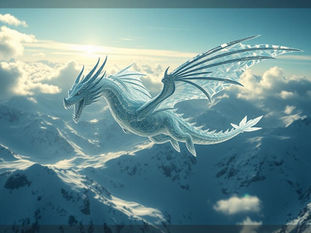
How to Recreate Specific Art Styles in Midjourney Without Explicitly Naming the Artist
Apr 28
4 min read
0
17
0

Have you ever wanted to capture the feel of a favorite artist's work in Midjourney, but without using their name in your prompt? Maybe you have reasons related to ethics, creativity, or just wanting to see what happens. It's possible, and it opens up new ways to create AI art.
Many people know you can add "in the style of [Artist Name]" to a Midjourney prompt and get results that look similar. But what if Midjourney just links that name to a set of descriptive terms? This guide shows you how to find those terms yourself so you can build a style prompt from scratch.
Why Find Styles Without Artist Names?
There are different thoughts on why you might do this. Some people prefer not to reference living artists directly unless for learning. Using descriptive terms lets you fine-tune the style exactly how you want it for different subjects. It also keeps the creative process focused on the elements of the art, not just the name.
Using AI to Break Down an Art Style
The key is to use a tool like ChatGPT to analyze an artist's work and describe it in detail. We can ask it to give us keywords and phrases that capture the style's main points.
An Example: Analyzing Arthur Adams
Let's look at Arthur Adams, a comic book artist known for detailed work on titles like X-Men and Godzilla. His style is well-known and often linked to Midjourney results when you use his name.
We can ask ChatGPT questions to learn about his style:
Ask if it knows the artist and their work. (This is important!)
Ask for 4-5 keywords describing their style. (You might need to refine this prompt to get useful descriptive words for AI prompting.)
Ask about their typical color scheme.
Ask if the style fits a formal art movement (like Image Comics era).
Ask about the typical mood, genre, or themes (e.g., fun and adventure).
By doing this, you gather a list of terms:
Descriptive keywords (like line art, detail, character design)
Color info (often penciler, vivid/saturated colors used by colorists)
Art movement/Era (potential terms like "Image Comics")
Mood/Theme (like "action-packed," "dynamic poses," "sense of adventure")
This information gives you the building blocks for your own prompt.
Building Your Style Prompt
Now, take the descriptive terms you got from the AI. Combine them logically. Start with the broader style term (like the art movement) and add descriptive keywords, then mood and genre terms.
A basic structure could look like:
[Art Movement/Era], [Descriptive Keyword 1], [Descriptive Keyword 2], [Mood/Theme 1], [Mood/Theme 2], [Genre]
For example, based on our Arthur Adams analysis, a style prompt might start to form using terms like "Image Comics style," "intricate line art," "dynamic poses," "action-packed."
Want to make this process even easier? Automating the extraction and prompt building can save you significant time. The Midjourney Automation Suite from TitanXT can help streamline your workflow, letting you focus more on creative ideas and less on manual prompt construction. It offers tools to enhance your Midjourney experience.
Adding Color (If Needed)
Sometimes, prompts based on artists known for line work (like pencilers) might result in black and white images. This happens because Midjourney associates terms like "line art" with grayscale.
To ensure your images are in color, simply add "full color" early in your prompt, perhaps after the art movement term. This tiny change can make a big difference.
Comparing Styles: AI Prompt vs. Artist Name
How does the created style prompt compare to using the artist's name directly? When you generate images with both prompts, especially using the same seed number for comparison, you'll likely see many similarities.
While there might be subtle differences in detail or composition, the overall look and feel – the line work, energy, character design style, and color palette – can be surprisingly close. This suggests that Midjourney might be using similar underlying descriptive data whether you use an artist's name or a collection of related terms.
What This Means for Midjourney Styles
This method offers interesting clues:
Artist names in Midjourney might act like shortcuts for detailed style descriptions.
By breaking down a style into its components, you gain control and can mix/match elements.
You can recreate stylistic effects without relying on referencing specific individuals.
Trying out this technique can help you better understand how different terms influence the images Midjourney creates and give you more control over your results. It’s a great way to explore and potentially find new variations of styles you like.
Discovering and managing different styles can take time. If you're producing many images or want to experiment efficiently, consider tools designed to help. The Midjourney Automation Suite by TitanXT provides powerful features for managing prompts, styles, and generating variations faster, making your creative process smoother.
Conclusion
Creating AI art with Midjourney is a journey of experimentation. Learning to replicate specific art styles by understanding their descriptive elements, rather than just using artist names, is a powerful skill. It gives you more flexibility, control, and a deeper understanding of how prompts influence outcomes. Give this method a try and see how it changes your Midjourney art creation process.
Ready to take your Midjourney creations further and manage your styles more effectively? Learn more about how the TitanXT Midjourney Automation Suite can help automate tasks and enhance your image generation workflow.






